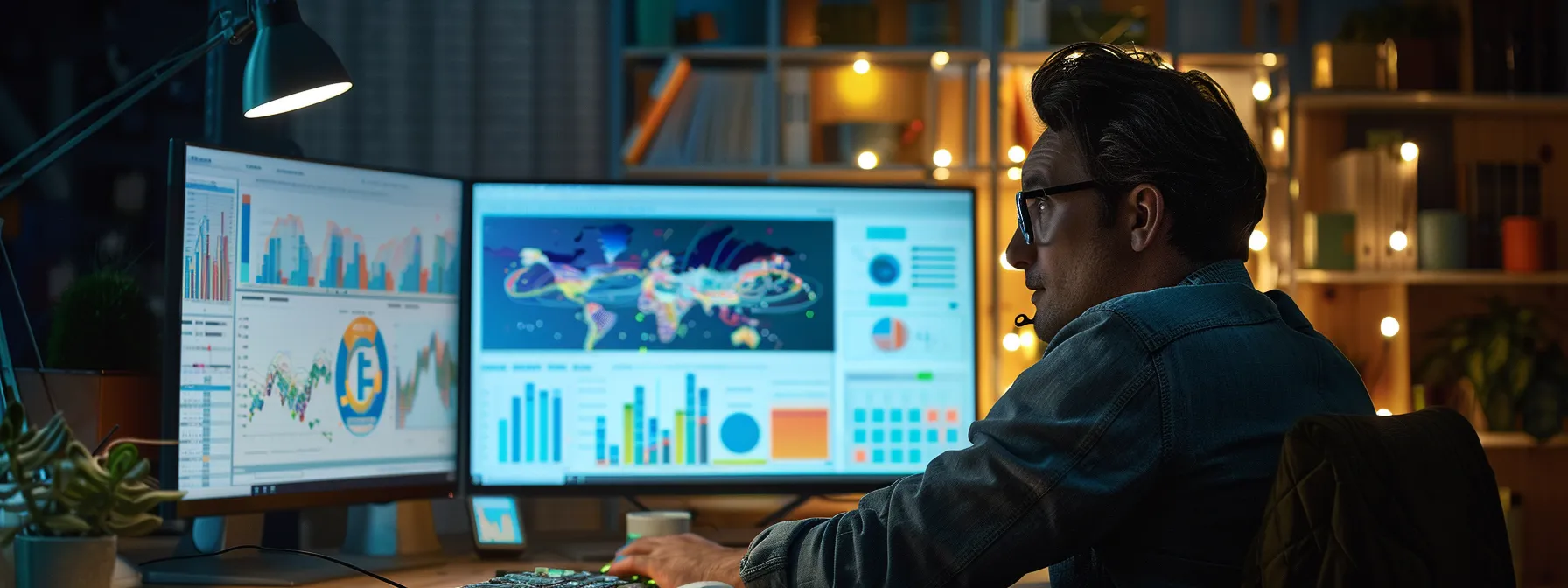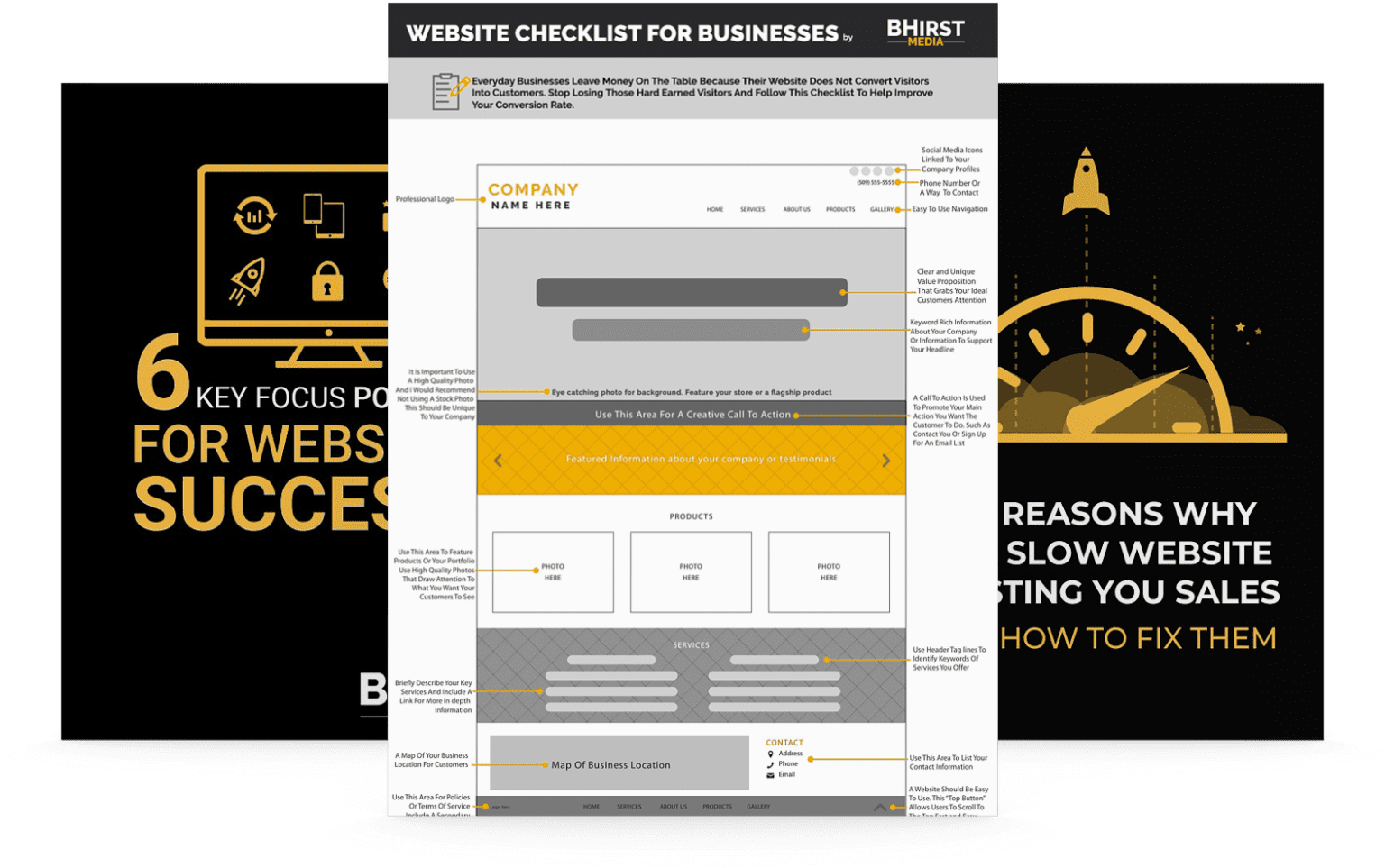
Starting a website design business can be overwhelming, especially when preparing for your first consultation. Many business owners struggle with knowing what to discuss during this critical meeting. This guide will outline essential steps, including understanding your business goals and identifying your target audience. By following these steps, readers will gain clarity on how to effectively communicate their needs, ensuring that their marketing strategy aligns with their vision. Preparing in advance can make a significant difference in the outcome of your project, helping you feel confident and informed.

Defining the purpose of the website is crucial in the meeting to ensure alignment in the website design process. Setting measurable goals for success is equally important, as it drives website development and provides a framework for assessing effectiveness. Additionally, considering how the website fits into broader marketing strategies, such as email marketing and outsourcing other tasks, ensures a cohesive approach to achieving business objectives.
Defining the purpose of a website is vital during the initial consultation with a web designer. This clarity helps to create a focused checklist of features and functionalities that align with the business’s goals. For instance, whether the website aims to generate leads, showcase products, or build brand awareness, having a clear concept guides the design process and informs the creation of an effective mockup that resonates with the user.
Setting measurable goals for success is a foundational step in preparing for a website design consultation. By identifying specific objectives, business owners can provide a website designer with a clear direction that aligns with the intended outcomes. For example, if the goal is to increase website traffic through effective copywriting and a user-friendly content management system, this should be communicated during the initial conversation. Additionally, defining the desired programming language can streamline the development process, ensuring that the final product effectively meets both business needs and user expectations.
It is crucial for business owners to consider how their website fits into their overall marketing strategy during the initial consultation with a web designer. This includes understanding how graphic design elements can enhance customer engagement and influence users’ perceptions. By conducting thorough research on industry trends and customer preferences, business owners can offer valuable insights during the design consultation, ensuring that the website not only meets their goals but also resonates with their target audience.
Knowing your business goals is just the beginning. Next, you must find out who will benefit most from what you offer.


Identifying the target audience is a crucial step before a website redesign. It involves outlining an ideal customer profile, which helps to tailor the design to specific preferences. Analyzing user needs and expectations ensures the website meets their demands. Additionally, determining key user journeys allows designers to create a more intuitive experience. Utilizing tools like analytics and questionnaires can provide valuable insights for a successful website design consultation.
Outlining an ideal customer profile is essential for aligning web design efforts with business objectives. Business owners should consider factors such as their pricing strategies and revenue goals, as these elements influence the design and functionality needed on the website. By understanding their business model and the specific needs of potential customers, they can better communicate expectations during the design consultation, ensuring that the final product effectively supports invoicing processes and enhances overall user experience.
Analyzing user needs and expectations is crucial for creating a website that fosters strong engagement and usability. Understanding what users seek allows business owners to tailor elements such as photography, layout, and color palette to enhance the user experience. Moreover, incorporating best practices for search engine optimization ensures that the website attracts the right audience, making it accessible and functional. Each of these components works together to create a site that resonates with users and aligns with business goals:
Understanding key user journeys is vital for business owners preparing for a website design consultation. By mapping out these journeys, they can provide insights to a web design agency on how users interact with their brand online, from landing on the site to completing desired actions. This understanding directly influences web development and content creation strategies, ensuring that the website effectively guides users through their experience and meets their expectations.
Understanding who your audience is just the beginning. Now it’s time to gather their inspirations and preferences, shaping ideas that resonate with them.

Gathering inspiration and preferences is a key part of the web design process. Business owners should collect examples of websites they admire, note specific features they desire, and consider the branding and visual elements that represent their domain name effectively. These insights will guide the agency in aligning the final design with the owner’s vision while optimizing for search engine performance and overall user experience.
Collecting examples of websites that resonate with business owners is essential for effective communication during the design consultation. By showcasing preferred user interfaces, owners can illustrate specific elements that appeal to their target audience, such as layout, color schemes, and features. Additionally, understanding how these examples connect with their construction and contract processes allows designers to leverage relevant skills, ensuring the final website not only reflects their vision but also addresses user needs effectively.
Clients should document specific features they desire for their website design prior to the initial consultation. This may include elements such as mobile responsiveness, a user-friendly interface that works across various platforms, including Internet Explorer, and tailored functionalities that match their business needs. By clearly articulating these features, clients can help their website builder create a final product that aligns with their goals and enhances user experience.
Business owners should give careful thought to branding and visual elements when preparing for their website design consultation. This includes considering how colors, fonts, and images can effectively communicate their brand identity and attract their target audience. For example, utilizing keyword research can guide the selection of visuals that resonate with potential customers, while aligning the website’s aesthetics with a clear message can help build trust and credibility, ultimately translating into increased income.
With ideas gathered, it is time to shape your vision. Prepare the content and assets that will bring your concepts to life, making them ready for the world to see.

Compiling essential text content and copy is a critical step before a website design consultation. Business owners should gather images, logos, and media files that represent their brand effectively. Organizing existing content for inclusion ensures a seamless transition to the new website, allowing designers to create a cohesive and visually appealing online presence tailored to the business’s needs.
Compiling text content and copy is a crucial task before attending a website design consultation. Business owners should gather all written materials, including product descriptions, service details, and company information, to ensure a comprehensive presentation of their brand. Providing clear, concise, and engaging content helps the design team understand the business’s voice and messaging, ultimately leading to a more effective and tailored website that resonates with the target audience.
Gathering images, logos, and media files is a fundamental step in preparing for a website design consultation. Business owners should compile high-quality visual assets that represent their brand and resonate with their target audience. By providing these materials ahead of time, they enable the web design team to create a cohesive and visually appealing website that effectively communicates their brand message and engages potential customers.
Organizing existing content for inclusion is a critical step before a website design consultation. This process involves categorizing text, images, and media that effectively represent the brand. By taking the time to streamline this content, business owners can ensure that the design team has the necessary materials to create a cohesive and engaging website that aligns with their business goals.
Once the content and assets are ready, it’s time to shape your financial plan. A clear budget and timeline will guide your project to success and keep it on track.


Establishing a realistic budget range is essential for a successful website design consultation, as it helps frame the project scope. Setting preferred deadlines and milestones ensures that all parties are aligned on expectations. Additionally, considering future maintenance needs is crucial for long-term site performance. These key areas will guide business owners in planning effectively for their upcoming web project.
Establishing a realistic budget range is a crucial step in preparing for a website design consultation. Business owners need to consider not only the design and development costs but also ongoing expenses such as hosting, maintenance, and marketing. This comprehensive approach helps ensure that the overall budget aligns with their business goals, providing a clear framework for making informed decisions about their website project.
To aid in visualizing budget considerations, check out the table below:
Setting preferred deadlines and milestones is crucial for a successful website design consultation. By establishing clear timelines, business owners can keep the project on track and ensure that all parties involved understand their responsibilities. For example, scheduling initial drafts and feedback sessions allows the design team to stay aligned with the client‘s vision while also providing room for adjustments. Establishing these timelines helps mitigate the risk of delays and allows for a more organized approach to the website development process:
Considering future maintenance needs is crucial for any business planning a website design. Business owners should allocate budget resources not just for initial design and development but also for ongoing maintenance, updates, and technical support. This ensures that the website remains functional, secure, and relevant over time, ultimately enhancing user experience and supporting long-term business goals.
Plans are made, but questions remain. Gathering your thoughts will lead to clarity and a stronger project.

Preparing for a website design consultation involves compiling specific questions to ask the designer, addressing any concerns or challenges that may arise, and discussing technical requirements. By organizing these discussion points, business owners can ensure a productive meeting that covers all necessary aspects, from design preferences to functionality. This preparation enhances communication and aligns expectations, setting the stage for a successful website project.
Preparing a list of specific questions for a designer is essential for a productive website design consultation. Business owners should inquire about the designer’s process, timelines, and previous work to gauge their suitability for the project. Additionally, understanding how the designer incorporates SEO practices into the design process will help ensure that the website ranks well and attracts the target audience effectively:
Addressing concerns or challenges during the initial website design consultation is crucial for establishing a productive relationship between business owners and designers. This dialogue allows clients to express uncertainties regarding design choices, project timelines, or budget limitations, ensuring that all parties are aligned from the start. By openly discussing these issues, business owners can gain clarity on problem-solving strategies the designer may employ, fostering confidence in the website development process and enhancing overall project outcomes.
Preparing to discuss technical requirements is a vital step in the initial website design consultation. Business owners should have a clear understanding of their website’s functionality needs, such as content management systems, e-commerce capabilities, and any specific programming languages that may be required. This discussion not only clarifies expectations but also ensures that the website design aligns with the overall business goals and technical capabilities.
Preparing for an initial website design consultation is vital for aligning business goals with effective design strategies. By clearly defining the website’s purpose, identifying the target audience, and gathering inspiration, business owners can facilitate a smoother design process. Establishing a realistic budget and timeline further ensures that expectations are met throughout the project. These essential steps lead to a cohesive and impactful online presence that effectively supports business objectives.
At BHirst Media, we specialize in translating your vision into a dynamic website that not only meets your needs but also enhances your brand’s online presence. Our expert team is dedicated to guiding you through every step of the design process, ensuring that your business goals are front and center. Partner with us for a website that drives results and reflects your unique identity.
